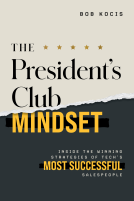
Purpose and Profit
How Business Can Lift Up the World
by George Serafeim
This title was previously available on NetGalley and is now archived.
Send NetGalley books directly to your Kindle or Kindle app
1
To read on a Kindle or Kindle app, please add kindle@netgalley.com as an approved email address to receive files in your Amazon account. Click here for step-by-step instructions.
2
Also find your Kindle email address within your Amazon account, and enter it here.
Pub Date Aug 09 2022 | Archive Date Feb 23 2024
Talking about this book? Use #PurposeandProfit #NetGalley. More hashtag tips!
Description
Are purpose and profit in conflict, or can both be achieved simultaneously with the right mindset and tools?
What are the forces that are reshaping the relationship between the two? What can we all do to strengthen the relationship between purpose and profit as entrepreneurs, managers, employees, consumers, and investors? Backed by cutting-edge research, Purpose and Profit provides answers to these fundamental questions that are increasingly defining the business landscape all around the world. Distinguished Harvard Business School Professor George Serafeim takes readers on a research-driven journey to understand:
- How and why environmental and social issues are becoming increasingly relevant for organizations worldwide;
- The ways that companies can design and implement strategies that generate greater impact;
- The six archetypes of value creation enabled by these new trends;
- The role of investors in driving greater recognition of ESG issues; and
- How we can all look at the choices we make and careers we pursue in a way that maximizes purpose and profit in our own lives.
Available Editions
| EDITION | Other Format |
| ISBN | 9781400230358 |
| PRICE | $27.99 (USD) |
| PAGES | 240 |
Available on NetGalley
Average rating from 16 members
Readers who liked this book also liked:
Carol C. Darr
Business, Leadership, Finance, Nonfiction (Adult), Politics & Current Affairs
Melissa Bernstein
Business, Leadership, Finance, Religion & Spirituality, Self-Help
Patrick Riccards
Business, Leadership, Finance, Nonfiction (Adult), Politics & Current Affairs
Ann-Margaret Carrozza
Business, Leadership, Finance, Parenting, Families, Relationships, Professional & Technical


















